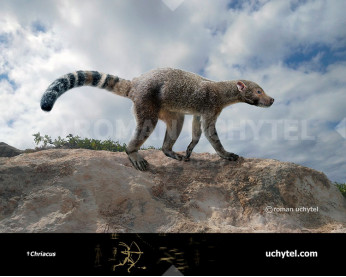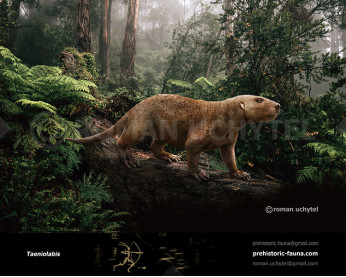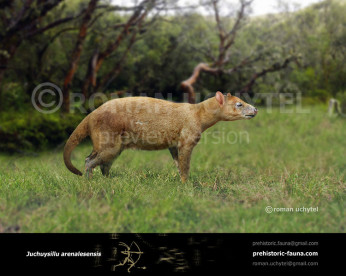Peligrotherium
1000000001110000000011
Peligrotherium (†Peligrotherium (Bonaparte et al., 1993))
Clade: †Meridiolestida
Order: †Dryolestida (?)
Family: †Peligrotheriidae
Time period: It lived during the Early Paleocene (South America, ~61.7–58.7 Ma)
Size: weight estimated at up to 20 kg.
A typical representative: †Peligrotherium tropicalis
Peligrotherium is an extinct meridiolestidan, and the sole member of the family Peligrotheriidae, from the Paleocene of Patagonia, originally interpreted as a stem-ungulate. Meridiolestida is an extinct clade of mammals known from the Cretaceous and Cenozoic of South America and possibly Antarctica. They represented the dominant group of mammals in South America during the Late Cretaceous. Meridiolestidans are generally classified within Cladotheria, more closely related to living marsupials and placental mammals (Theria) than to monotremes. Within Cladotheria, they have often been placed in a group called Dryolestoidea (or Dryolestida) together with a few other taxa, such as Dryolestidae and Paurodontidae. Were likely herbivores/omnivores.
Peligrotherium remains have been found in the Salamanca Formation. It was a dog-sized mammal, among the largest of all dryolestoids (as well as the largest South American Paleocene mammal), and closely related to mesungulatids, another lineage of large sized herbivorous dryolestoids. A recent phylogenetic study finds it to be the sister taxon to Reigitherium.
The latest surviving meridiolestidan was the mole-like insectivore Necrolestes from the Miocene of Patagonia.
Оплата
У Вас є кілька зручних способів купівлі зображення: кредитна чи дебетова картка Visa, Mastercard, Maestro; PayPal або банківський переказ
Peligrotherium (†Peligrotherium (Bonaparte et al., 1993))
Clade: †Meridiolestida
Order: †Dryolestida (?)
Family: †Peligrotheriidae
Time period: It lived during the Early Paleocene (South America, ~61.7–58.7 Ma)
Size: weight estimated at up to 20 kg.
A typical representative: †Peligrotherium tropicalis
Peligrotherium is an extinct meridiolestidan, and the sole member of the family Peligrotheriidae, from the Paleocene of Patagonia, originally interpreted as a stem-ungulate. Meridiolestida is an extinct clade of mammals known from the Cretaceous and Cenozoic of South America and possibly Antarctica. They represented the dominant group of mammals in South America during the Late Cretaceous. Meridiolestidans are generally classified within Cladotheria, more closely related to living marsupials and placental mammals (Theria) than to monotremes. Within Cladotheria, they have often been placed in a group called Dryolestoidea (or Dryolestida) together with a few other taxa, such as Dryolestidae and Paurodontidae. Were likely herbivores/omnivores.
Peligrotherium remains have been found in the Salamanca Formation. It was a dog-sized mammal, among the largest of all dryolestoids (as well as the largest South American Paleocene mammal), and closely related to mesungulatids, another lineage of large sized herbivorous dryolestoids. A recent phylogenetic study finds it to be the sister taxon to Reigitherium.
The latest surviving meridiolestidan was the mole-like insectivore Necrolestes from the Miocene of Patagonia.

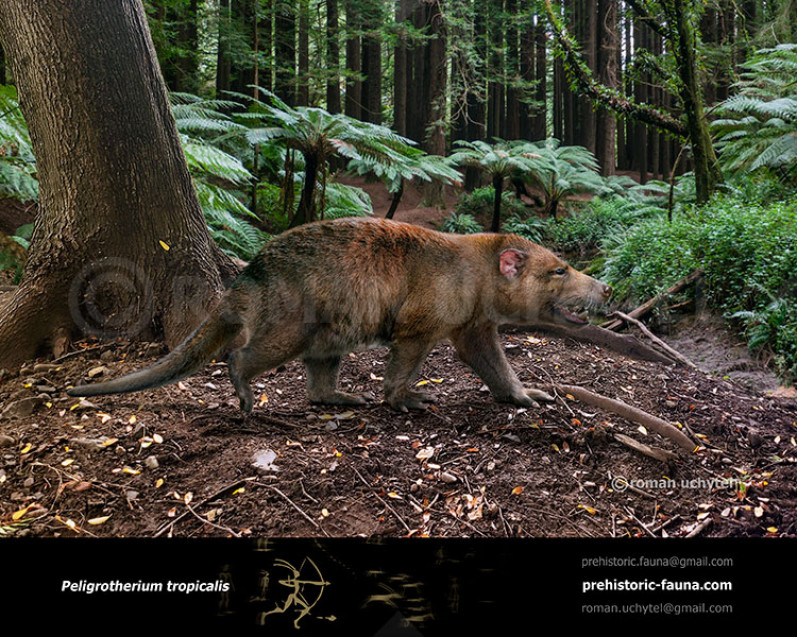
-797x638.jpg)

-70x56.jpg)
-346x277.jpg)
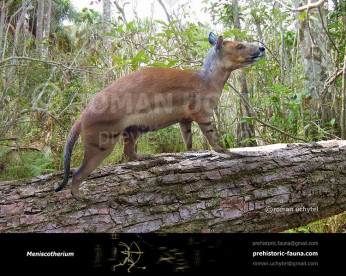
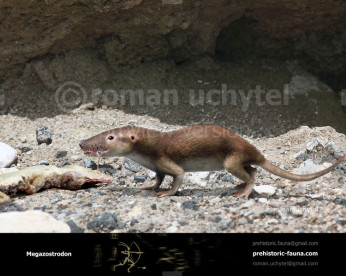
-346x277.jpg)
